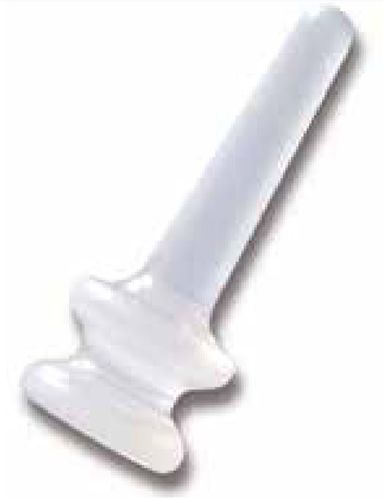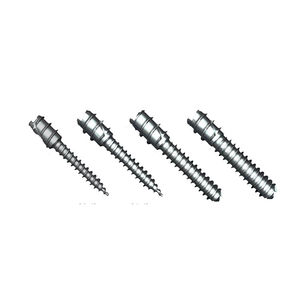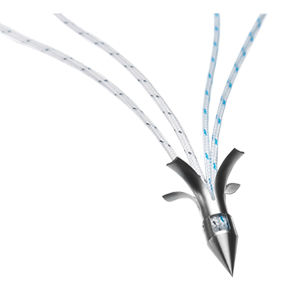
- Secondary care
- Orthopedic surgery
- Digit joint implant
- Wright Medical Technology
Interphalangeal hand joint implant TIE-IN™
Add to favorites
Compare this product
Characteristics
- Joint
- interphalangeal hand joint
Description
TRAPEZIUM IMPLANT
Key Benefits
Soft Tissue “wrap-around” reduces subluxation
Rounded corners to reduce implant stress
Simple instrumentation
The TIE-IN® Trapezium implant was developed to restore function to
the CMC joint that has been disabled by degenerative arthritis
and/or traumatic arthritis.
It is a single stemmed, flexible implant that replaces the trapezium
and is inserted in the first metacarpal. This implant is made of a
silicone elastomer.
GENERAL PRECAUTIONS
Proper surgical procedures and techniques are the responsibility of
the medical professional. Each surgeon must evaluate the
appropriateness of the procedure used based on personal medical
training and experience. Wright Medical Technology, Inc. cannot
recommend a particular surgical technique suitable for all patients.
INDICATIONS
• Pain and palpable crepitation localized at the base of the thumb
• Motion, grip strength, and pinch decreased
• Arthritic changes evident on X-ray
CONTRAINDICATIONS
• Conservative treatment possible
• Inadequate skin, bone, or neurovascular structures
• Irreparable tendon system
PREOPERATIVE EVALUATION
Ideally Suited Patients:
• Pantrapezial arthritis
• Poor bone quality
• MP joints with less than 20º of dynamic hyperextension
• Limited thumb adduction deformity
INCISION AND EXPOSURE
Incision of choice is an extended volar curvilinear. Distally
between the glabrous and non-glabrous skin over the
thenar eminence, curving slightly volar at the distal wrist
flexion crease and extending proximally for 3.0cm along
the radial side of the FCR tendon.
Identify and protect the radial artery coursing obliquely
over the dorsal body of the trapezium. Sharply dissect
the FCR free
Catalogs
No catalogs are available for this product.
See all of Wright Medical Technology‘s catalogsRelated Searches
- Bone plate
- Compression plate
- Metallic compression plate
- Locking compression plate
- Distal compression plate
- Compression bone screw
- Metallic compression bone screw
- Proximal compression plate
- Forearm compression plate
- Arthrodesis nail
- Lateral compression plate
- Tibia compression plate
- Bone substitute
- Radius compression plate
- External fixation system
- Arthrodesis plate
- Cannulated compression bone screw
- Adult external fixation system
- Non-locking compression plate
- Proximal fixation intramedullary nail
*Prices are pre-tax. They exclude delivery charges and customs duties and do not include additional charges for installation or activation options. Prices are indicative only and may vary by country, with changes to the cost of raw materials and exchange rates.





































